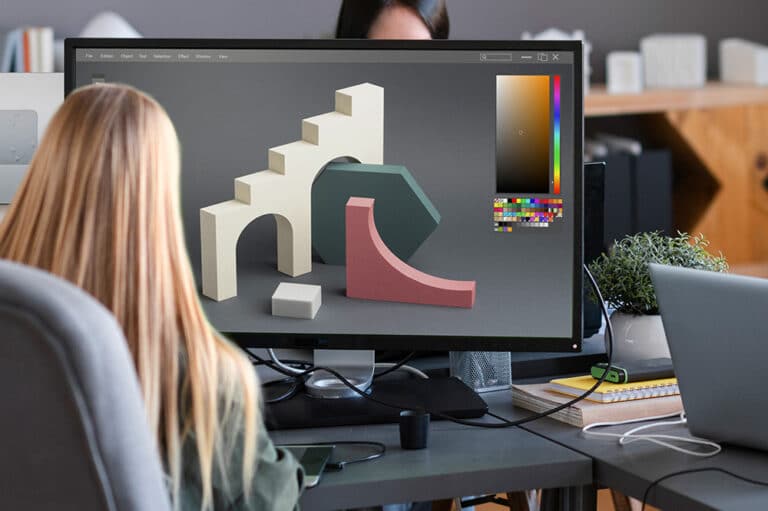How to become a programmer

Today, the demand for programmers is growing 12% faster than the labor market average in countries such as the United States, according to a report from Burning Glass. In some countries, like Spain, the demand for programmers and other technological positions is so high that 60% of companies are unable to meet their demand for professionals.
Because of this, becoming a programmer is a very attractive option, but depending on the apprenticeship and career path you want to follow, it will cost you more or less. That is why it is essential to know what steps you need to follow and what do you need.
How to become a programmer in 7 Steps
Depending on your situation, your level of programming knowledge and your objectives, reaching your goal will take more or less time, but you will have to go through at least the following steps:
1. Study the programming industry
To become a programmer, it’s as important to study programming as it is to understand the programming market so that you do not end up specializing in languages that are obsolete, undervalued or not suitable for the job you want.
Understanding the market and the programmer job in depth will help you understand what skills and knowledge you need to study for the programmer position you want. So, you can start by doing your research:
- What does a programmer do?
- What types of programmers are there?
- What programming areas exist?
- Which companies require programmers?
- Which programming languages are most in demand?
- How much do programmers make?
Studying multiple programming job postings that you find interesting can help you uncover much of this information.
Through these offers you can find out what kind of companies are looking for programmers, what knowledge and skills they require, what programming languages they require and what responsibilities and tasks are associated with the position offered. Some ads even reveal the salary that the company offers for the position.
My recommendation is to make a spreadsheet with all this information to identify patterns in the requirements for these positions, the types of companies, salaries, etc. This way you will be able to identify what is most useful for you to learn first and what it will be useful for.
From there you can set priorities and plan your learning effectively, according to your resources and your objectives.
2. Learn computational thinking
I know, you may be eager to dive into learning a programming language, but it is essential that you first lay the foundations of your learning.
To become a programmer it is important that you understand, organize and process information in the right way and for this, computer language is key.
Jeannette M. Wing, Professor of Computer Science at Carnegie Mellon University (Pittsburgh, PA.), stated in her article “Computational Thinking” that computational thinking allows “solving problems, designing systems and understanding human behavior, making use of the fundamental concepts of computer science”.
In practice, learning computational thinking will allow you to:
- Formulate and break down problems so that they can be solved more easily.
- Analyze and logically organize information using abstractions.
- Identify, analyze and know how to implement the most effective solutions.
- Know how to transfer the resolution processes applied to other areas, so that you save more and more time and effort.
3. Choose a programming language to get started
Once you have analyzed the programming market and internalized computational thinking, you should decide on the area of programming that interests you the most. Some of the most popular programming areas you can choose from are:
- Machine learning.
- IOT (Internet Of Things).
- Development of mobile applications.
- Development of desktop applications.
- Web development.
- Operating systems.
- Cloud computing.
- Computer Security.
- Video games.
- Virtual Reality.
The point is that depending on what you are more interested in, you will need to learn some programming languages or others. Sometimes they will be more popular and easy languages, such as JavaScript, and sometimes you will need to learn more complex ones, such as Seashark or Java.
My suggestion is to start with the easiest and most used languages, as they will allow you to start creating your own projects as soon as possible and even get your first jobs as a programmer.
4. Learn to use frameworks
Frameworks are programming structures or templates that are used to undertake projects in less time and with fewer errors, since their code is clean and consistent. In addition, you can use them as a basis for your programming projects or to complete them.
Therefore, frameworks are a resource that can help you progress and complete your initial projects more quickly. Numerous frameworks can be found for many different purposes, so I recommend creating, collecting and organizing your own library of frameworks very early on.
5. Create your programming portfolio
As you learn, I suggest you document and save the projects you create. This will make it easier for you to choose the best ones and build your portfolio later on. Your portfolio will be your main asset when you start looking for a job as a programmer.
Consequently, it is critical that you develop and present a portfolio that is representative of your best skills as a programmer, as this is often of far more importance to recruiters than any academic degree you present.
6. Find and apply for programming jobs
Finding and applying for programming jobs is fairly straightforward, but job interviews for programmers can become very complex and many times you will be surprised with programming tests you don’t expect.
In my opinion, a good practice is to prepare the interview questions very well, be relaxed and pay close attention to the questions. When you finish, take note of where you failed or felt insecure and learn it well for the next job interview you attend.
It is possible that the first job you get will be as an intern or with a low salary, so don’t be surprised. Once you gain 3 to 5 years of experience, you will have access to better and better job offers and remuneration.
7. Practice, improve and repeat
The programming world is constantly evolving, so the best way to maintain an attractive profile to recruiters is to constantly learn, practice and improve. There are no shortcuts or secret formulas.
Every time you learn something new, update your CV and portfolio projects to let recruiters know what new skills you have acquired and what you are capable of programming.
I also suggest keeping up to date with the latest developments, either by participating in programming forums, joining programming groups or following specialized websites.
Conclusions on how to become a programmer
Becoming a programmer is a long-distance race, so I recommend you make it easy on yourself and devote your energy and attention to practicing and improving, as I mentioned above.
Think of courses or programming books as shortcuts.
Good programming courses and books can save you hours and hours of research, trial and error on your own. Personally, I consider them an investment that accelerates and increases my income in the medium and long term.
Acquire the equipment and resources you need
If you don’t have a laptop, you might want to get one so that you don’t have to be always typing code on your desktop. A laptop suitable for programming can be purchased for a fairly affordable price, although if you want to dedicate yourself to video games you may want to invest in a more powerful desktop or laptop.
Get yourself a good external monitor, which has a size of 24″ or more and 4K resolution, so you don’t get eye strain when coding for hours. In Layoutmag we have selected some of the best budget monitors on the market with these features.
A keyboard for programming will also help you to work more agile and above all not to load your wrists and forearms. If you plan to dedicate yourself to video game programming, you will probably be interested in using a mechanical keyboard that can also be used for gaming.






